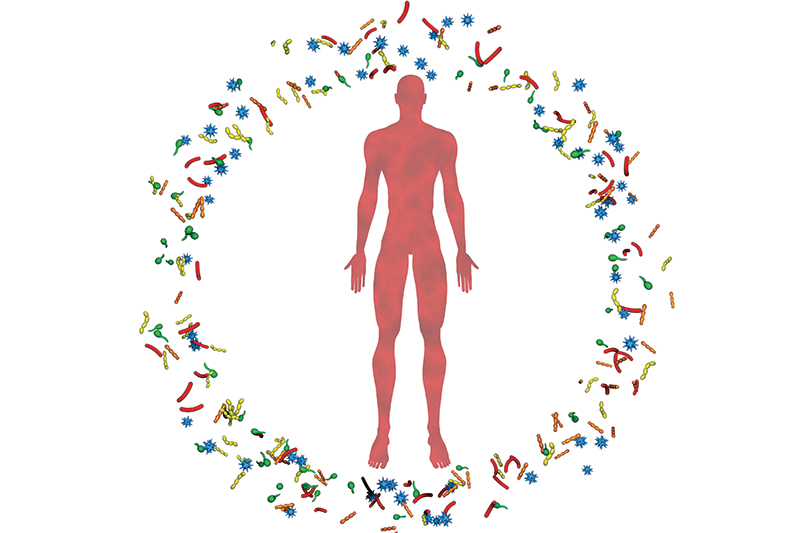Did you know that what we eat affects our gut bacteria and can cause weight gain or weight loss resistance? In fact, your weight may be controlled more by your bacteria than by what you eat. Gut bacteria thrive on what you feed them.
Research has suggested that we have about 100 trillion bacteria—about three pounds! — living inside our gut (microbiome), playing a huge role in our health and disease. The good bacteria in our gut flora promote healthy gastrointestinal functions, providing protection from infection and regulating metabolism, and comprise more than 75% of our immune system. Researchers believe an overgrowth of bad gut bacteria plays a big factor in the metabolic diseases that plague us today, such as type 2 diabetes and obesity.
Our dietary habits have a dramatic impact on the mix of good and bad bacteria. What we eat dictates the kind of bacteria that grow in our gut. Here are some simple steps to take to support a healthy gut.
1. Omit Processed and Refined Foods
A diet that’s high in highly processed, high-sugar, high-fat, and low-fiber diets significantly alters the bacteria that generally grow in our digestive tracts, and the change has been linked to weight gain and diabetes. These types of food allow those undesirable gut bacteria to thrive.
2. Avoid Sugar
Studies have shown that a diet high in sugar can lead to an overgrowth of yeast species and other pathogenic bacteria. For good bacteria to thrive, they require complex carbohydrates like vegetables, beans, and whole grains—not sugar. When you get too many calories from sugar the good bacteria will go hungry and eventually die off, allowing for an overgrowth of the bad bacteria.
3. Eat More Fiber
Eating fibrous plant foods is an important strategy for improving the robustness of gut bacteria. These plants provide the raw material to feed the bacteria through a process called fermentation. The diversity and number of plants you eat will be reflected in the diversity and number of bacteria in your gut—the more, the better. Aim for at least 25 to 35 grams of fiber a day.
4. Embrace Fermented Foods
Fermented foods provide probiotics. Greek yogurt and kefir are a good start. Look for products that say “live and active cultures” and avoid those with added sugars. Other probiotic powerhouses include naturally fermented sauerkraut, kimchi, and pickles—these contain live bacteria and prebiotics that nourish good gut bacteria.
5. Include Prebiotic Foods
Prebiotics are soluble fiber found in certain plant foods that act as “food” for probiotics. They’re like fertilizer, helping probiotics grow and flourish in your gut. Prebiotic-containing foods include Jerusalem artichokes, garlic, leeks, asparagus, and bananas. You should eat prebiotic food every day.
6. Be Particular with Your Meat
A diet heavy in factory-farmed animal protein feeds a type of bacteria called Bilophilia, which has been linked to inflammation in animal studies—and chronic inflammation is a major contributor to obesity. If you’re a meat-lover, choose grass-fed beef. It’s a good source of omega-3 fats, which helps lower inflammation and promotes healthier gut bacteria.
7. Change the Type of Fats You’re Using
Studies show that most omega-6 fats, like canola and soybean oils, promote the growth of bad bacteria in the gut. Replace these oils with those high in healthy omega-3 fats, like coconut oil, avocados, and grass-fed butter, and eat fish rich in omega-3s.
Changing your dietary habits can help regulate gut function and flora. If you need help improving gut health or meeting your weight loss goals, contact Grant’s Nutrition & Wellness to make an appointment.
Jane Grant, RDN, CD-N, has been a registered dietitian since 2005 and is trained in Integrative and Functional Nutrition to address the root cause of disease and help promote optimal health. Jane is the founder of Grant’s Nutrition and Wellness in Berlin, CT. She can be reached at 860.357.2282 or admin@grantsnutrition.com.
Visit www.grantsnutrition.com and find us on Facebook and Instagram.
